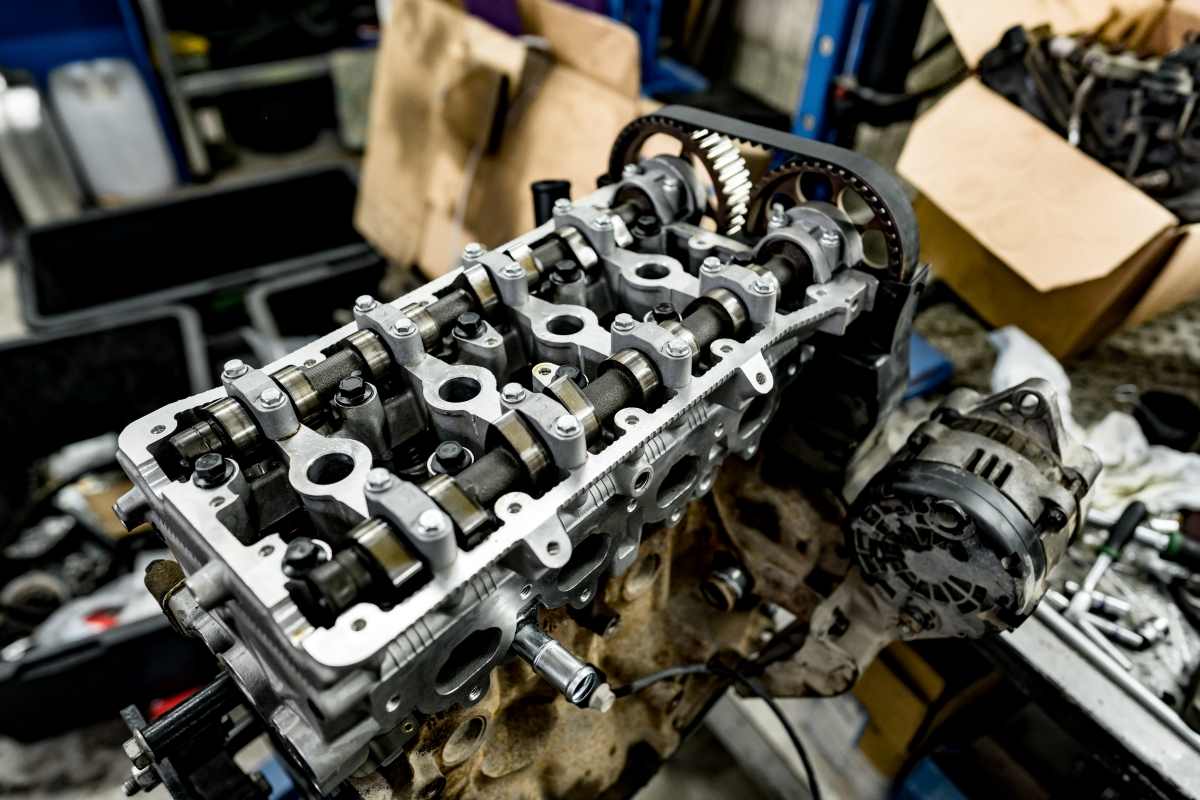What is a Cylinder Block: Meaning, Components, Types, Functions & Working

A cylinder block, or an engine block, is a prime component of a vehicle’s engine. It plays a crucial role in lubricating the engine, controls temperature and aids in engine stability. To ensure that the component fulfils its purpose and forms the foundation of the engine system, it is made with quality material to withstand extreme temperatures and high loads.
The following sections mention in detail the engine block, its functions, components and material.
What is an Engine or Cylinder Block?
Engine or cylinder blocks refer to the big containers that house the cylinder and its internal parts, including the coolant tubes, intake and exhaust channels, crankcases, etc.
It is the primary stationary body and forms the basis of an automotive engine. The cylinder block provides support and enclosure and may also have a separate crankcase for the crankshaft. A separate aluminium crankcase is favourable because it is lighter, not so expensive and easier to replace.
What are the Functions of a Cylinder Block?
It performs various functions as one of the major components of an automobile’s engine. These are mentioned as below:
- It encloses the connecting rod, piston and crankshaft, ensuring that all three work together.
- The engine block also supports engine components, including the auxiliary devices, such as the air conditioning system, exhaust, manifold, alternator and more.
- The component also plays an important role in circuit cooling.
- The cylinder block is also a part of the lubrication cycle, such as the oil pump, filer pan and more.
What Are the Components of a Cylinder Block?
The construction of a cylinder block consists of the following major components:
- Cylinder head covers
- Auxiliary equipment support
- Engine block
- Oil pan
- Lubrication circuit passages
- Cylinder head
- Cylinder
- Coolant circuit passage
- Crankshaft fixing support
- Threaded hole for cylinder head bolts
What Are the Types of Cylinder or Engine Blocks?
To know the types of cylinder blocks, you need to know that they are classified depending on the configuration of the engine cylinder. Find the different types of cylinder blocks below:
1. V Engine Cylinder
V Engine Cylinder is a common and frequently utilised type of engine cylinder in recent days. Two rows of engines are stacked in this type of cylinder block. They are further angled with each other, as a wider angle makes it harder to balance the engine. Thus, the angle V is typically kept between 15 degrees and 20 degrees. Balancing this type of engine can be a bit challenging with counterweights on the crankshaft.
2. Inline Engine Cylinder
As the name suggests, a series of cylinders are arranged in a straight line in this type of engine block. Generally, vehicles that have this type of engine cylinder installed in them work smoother. This is the reason why Inline Engine Cylinders are used more in vehicles where high rpm or revolutions per minute is needed, such as passenger cars.
3. Opposed Engine or Boxer Engine Cylinder
The boxer engine is the flat-pressed V engine. In this type, two rows of cylinders are kept opposite to each other. Also termed pancake engines, they require small headroom so that the engine area can be compact. Due to their build, they are typically installed in high-end vehicles.
What are the Materials Used to Make Cylinder Blocks?
The primary material in making this component is typically grey cast iron. However, to increase its performance, manufacturers may add chromium and nickel.
Here are some instances of different cylinder head parts and their corresponding materials.
- Material for Crankcase: The crankcase present at the base is primarily made of aluminium and sometimes of grey cast iron—using aluminium results in a lighter component that performs better.
- Material for Aluminium Block: Cast iron or steel sleeves are utilised on the cylinder in the aluminium block. Due to higher thermal conductivity, aluminium blocks help in preserving temperature consistency.
- Material for Cylinder Walls: Further, the cylinder walls in the system are made of cast iron due to the metal’s low wear and tear capability. Some smaller engines may also use chromium to improve the component's life cycle.
Overall, cast iron is the major material used for cylinder blocks since it is machine-friendly and has higher wear quality. This production method is used to create the parts to establish a sturdy basis for the parts.
What are the Common Problems in Cylinder Blocks?
Similar to other vehicle components, the cylinder blocks, too, tend to produce some issues with time. They typically are:
Engine Coolant Leakage
The radiator, water pump, frayed hose, or heater core are possible leak-causing components. It can occasionally be brought on by the engine block cracking itself. A freeze-out plug may come loose or rust, but replacing it is simple.
Worn-out Cylinder
After rigorous and continued vehicle usage, the component may wear out on its own. This can lead to troubles with the piston ring, and the cylinder can develop cracks, which would need immediate attention.
Porous Cylinder Block
This issue can be caused by any type of contamination that somehow enters the engine, usually during manufacturing.
Therefore, the cylinder or engine block is a crucial part of the vehicle, and you must keep an eye out for any symptom of malfunction. This will ensure timely remedial steps and curb expensive repairs/replacements in the long run.
















